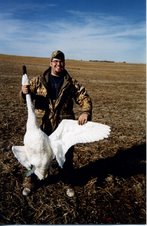
It’s all down hill from here. Not really but soon the summer sun will heat the waters of Minnesota lakes and the fish will go deep. Walleyes, found in shallow water until mid-June will be tough to find, and big schools of largemouth bass will move in search of cooler water. This is when I switch my focus to panfish.
For the next couple of week’s crappies will be my fish of choice. In Minnesota crappies can be fished for and caught all year round. I find that fishing for them post-spawn is more of a challenge. Early in the spring one can simply tiptoe down my dock and my neighbors and catch a few crappies straight jigging with a minnow. I wait till these fish go deep to pursue them.
Traditionally, crappies with their “paper mouths” are a challenge to catch and these fish make excellent table fair. They are pleasure to land and consume.
While fishing the other day I noticed a school of crappies swarming the surface of the calm water on the lake I was fishing. I should have switched tactics and presented theses fish with a jig. However, I am hardheaded and I wanted to fool one more walleye while the fish were still hanging in shallower water.
Some people fish for Crappies using a minnow and a plain hook. Personally, I use jigs or jig heads tipped with minnows. I have found that a 1/16-ounce jig tipped with a fathead minnow works the best. The largest jig size I would use for Crappie is 1/8-ounce. As a rule, I usually say the smaller the better, this allows for a slower presentation. Some fishermen swear by tube jigs, twister tails and flu flu’s. All these are added attractants, which I find myself using only when I run out of bait.
Crappies are a suspended fish by nature, hanging on the edge of weed lines off the bottom. Crappie strike upward, like the majority of fish. This makes it crucial for fishermen to present their bait or jig above the fish. If you are fishing below them, or at their level, you might as well be sitting at home playing video games.
I have found that Crappie hit slower presentations the most, often times on the drop of the cast. The best way I have found to place the jig at the right depth and speed is using a slip-bobber. If I find a school of Crappie suspended five feet from the surface of the water, I set my slipknot at four feet. With a 1/16-ounce jig head tipped with a minnow, I will cast ten to fifteen yards. Once the slipknot has reached the bobber I slowly reel the set-up in.
Not only does the slip bobber allow the less experienced fishermen to place the jig at the proper depth and speed, it also helps with the hook set. When jigging without the bobber I find the majority of fishermen pull the jig out of the fish’s mouth, or set it after the fish has spit it out. The bobber seems to allow the perfect delay for an accurate hook set. Of course, using the proper equipment helps as well. Ultra light rods and reels are essential to feeling hollow strikes while panfishing.
Mastering the technique is unfortunately easier then finding the fish. It is important to first scout out beaver dams, sunken islands and channel openings when searching for schools of crappie. Look for them to be in roughly ten feet of water suspended five to six feet from the bottom.
In my youth my cousin would always bring along a few Daddy-longlegs spiders when we went out panfishing. When we got to suspected areas he would toss them on the calm water. The spiders would run for shore and we would locate schools of crappies by the fish attacking the spiders on the surface of the water. When fishing, sometimes you have to think outside the box to be successful.

No comments:
Post a Comment